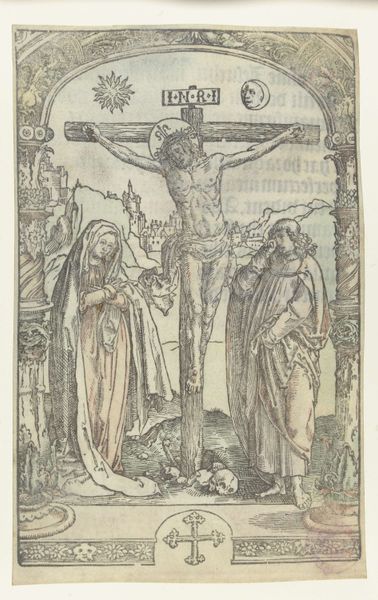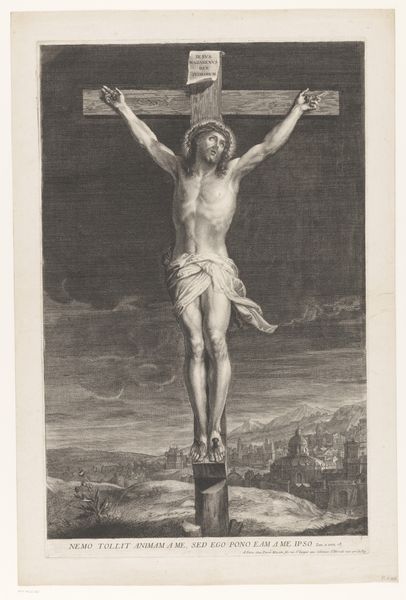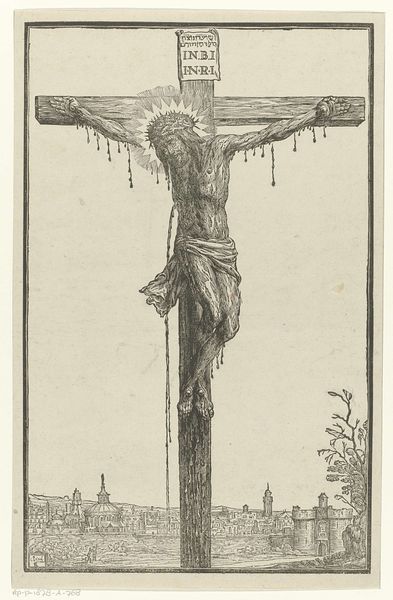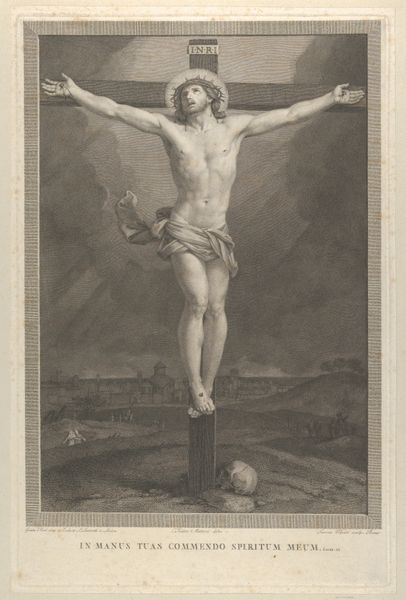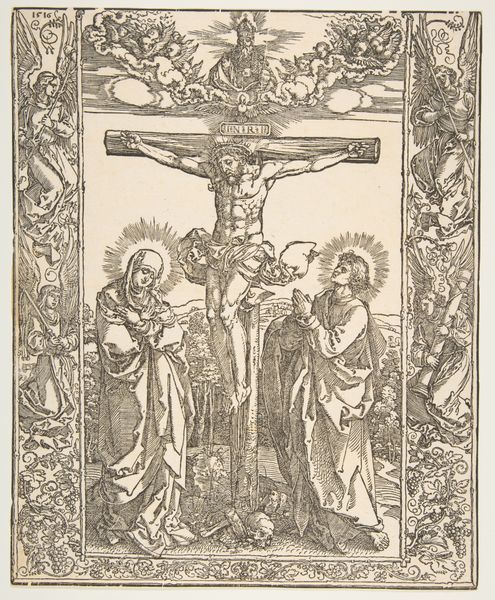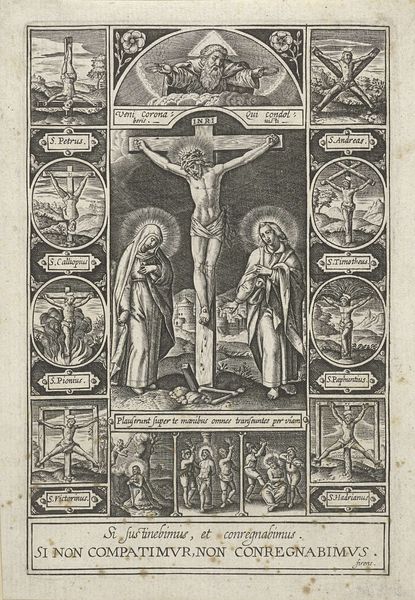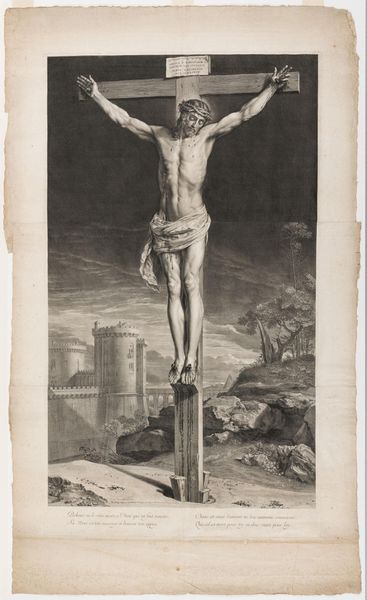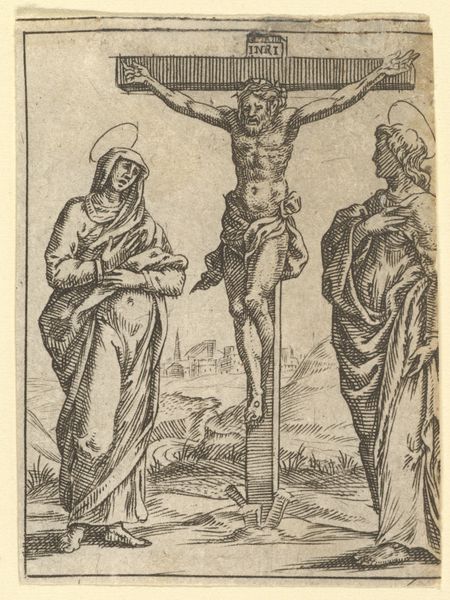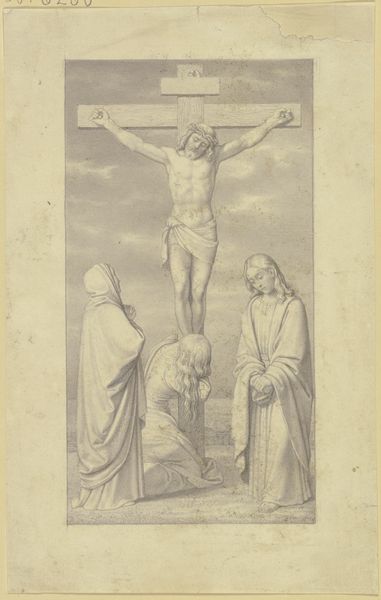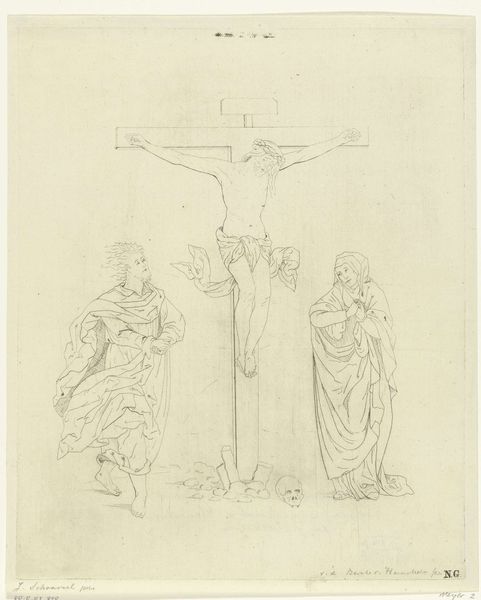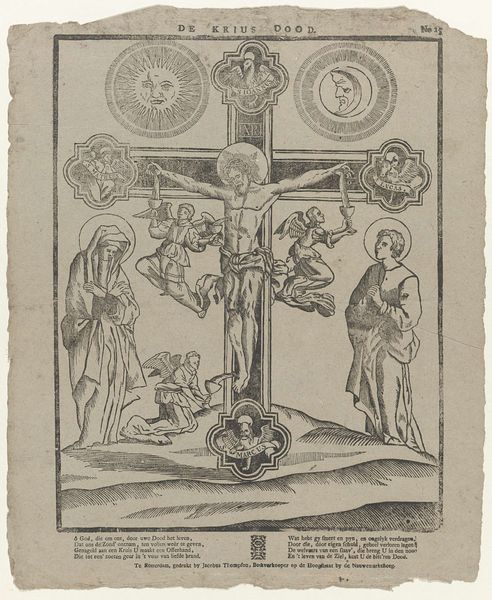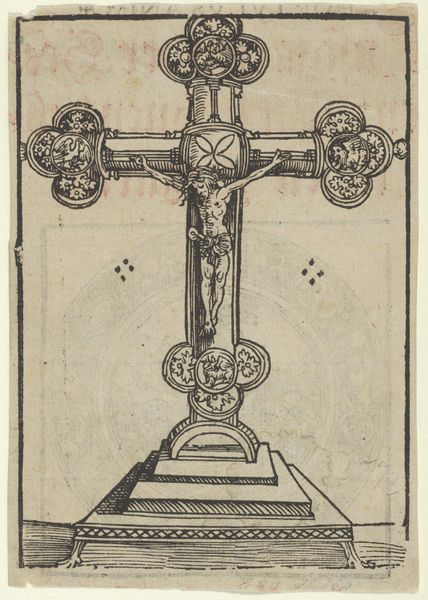
print, engraving
#
narrative-art
#
baroque
# print
#
old engraving style
#
figuration
#
history-painting
#
engraving
Dimensions: height 112 mm, width 71 mm
Copyright: Rijks Museum: Open Domain
Editor: Here we have "Christus aan het kruis," a 17th-century engraving. The figure of Christ on the cross dominates the composition, and the use of line is quite striking, almost harsh. There’s something undeniably somber and stark about the scene. How do you interpret this work, considering its historical context? Curator: Well, considering it’s a print from the 17th century, it is key to look at its purpose. These prints weren’t simply devotional objects. Take a look at the inscriptions at the bottom and top; can you see how it functions in the public sphere, relating to the church, state and community, with promises of 'Ablasz' or Indulgences from a local bishop for those who contemplate it? Editor: I do see that. It seems like the image served almost as a kind of religious advertisement? Curator: Precisely. The power dynamic is important. Who gets to control the narrative and dispense salvation? Note how the emotional manipulation in Baroque imagery, intended to inspire religious fervor, merges here with this political function, it's not just an image but also an authoritative statement, which served specific socio-political functions at a local level. What does the specific locality below Christ tell you? Editor: Ah, yes. The city looks to be either Rome or Jerusalem - this looks more and more about the image, dissemination and re-affirmation of political power, in an idealized past setting! Thanks - that really shifts my perspective on what's actually being shown, and why. Curator: Exactly! Examining art in the context of such social forces and political ambitions can reveal how institutions have historically wielded imagery for influence and control. Understanding art involves uncovering its often-complex place in societal structures.
Comments
No comments
Be the first to comment and join the conversation on the ultimate creative platform.
